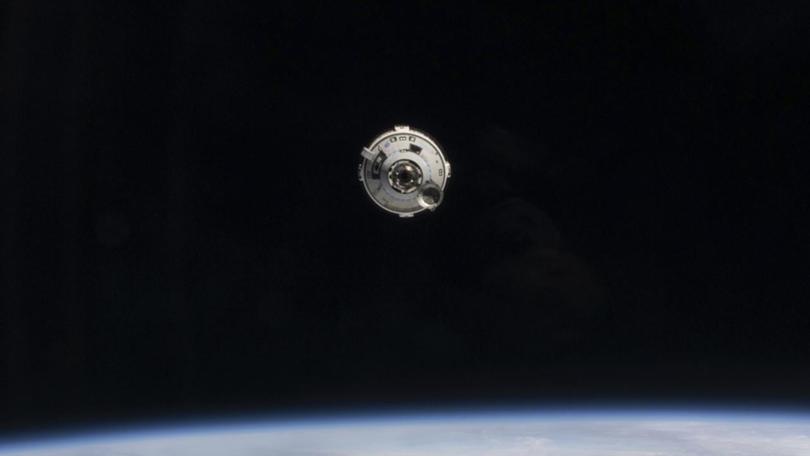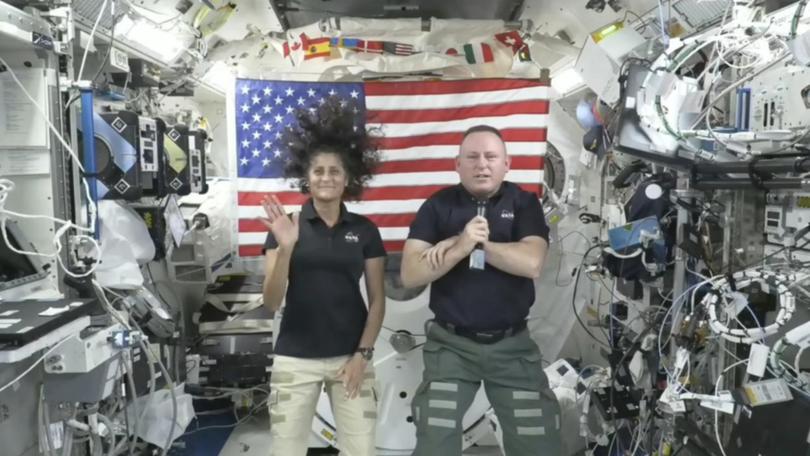NASA delays decision on stranded astronauts Suni Williams and Butch Wilmore after Boeing Starliner failure

Two astronauts stranded in space are no closer to knowing when NASA will try and bring them home.
NASA had flagged that a decision on how the company would bring the astronauts home would be made in mid-August, but at a press conference on Wednesday, it announced the decision had been delayed.
Experienced astronauts, Sunita “Suni” Williams and Barry “Butch” Wilmore were scheduled to spend just eight days in space after leaving Earth on June 5.
Sign up to The Nightly's newsletters.
Get the first look at the digital newspaper, curated daily stories and breaking headlines delivered to your inbox.
By continuing you agree to our Terms and Privacy Policy.However, more than two months on, the stranded duo are staring down the barrel of another eight months of uncertainty.

NASA said it is still deciding whether to keep them at the International Space Station until early 2025 and send their troubled Boeing capsule back empty.
The troubled capsule experienced thruster failures and helium leaks during the trip to the space station, raising doubts about its ability to return safely and leaving the astronauts in limbo.
The thrusters are crucial for holding the capsule in the right position when it comes time to descend from orbit.
Rather than flying Boeing’s Starliner back to Earth, Ms Willians and Mr Wilmore could catch a ride on SpaceX’s next flight. That option would keep them at the space station until February.
NASA officials on Wednesday said they are analysing more data before making a decision by the end of next week or the beginning of the next.
“We’ve got time available before we bring Starliner home and we want to use that time wisely,” said Ken Bowersox, NASA’s space operations mission chief.
NASA’s safety chief Russ DeLoach added: “We don’t have enough insight and data to make some sort of simple, black-and-white calculation.”
DeLoach said the space agency wants to make room for all opinions unlike what happened in NASA’s two shuttle tragedies, Challenger and Columbia, when dissenting views were ignored.
“That may mean, at times, we don’t move very fast because we’re getting everything out, and I think you can kind of see that at play here,” he said.
Switching to SpaceX would require bumping two of the four astronauts assigned to the next ferry flight, currently targeted for late September. Wilmore and Williams would take the empty seats in SpaceX’s Dragon capsule once that half-year mission ends.
Another complication: The space station has just two parking places for US capsules. Boeing’s capsule would have to depart ahead of the arrival of SpaceX’s Dragon in order to free up a spot.
Boeing maintains Starliner could still safely bring the astronauts home. The company earlier this month posted a list of testing done on thrusters in space and on the ground since liftoff.
NASA would like to keep SpaceX’s current crew up there until the replacements arrive, barring an emergency. Those four should have returned to Earth this month, but saw a seventh month added to their mission because of the uncertainty over Starliner, keeping them up there until the end of September. Most space station stays last six months, although some have gone a full year.
Wilmore and Williams are retired Navy captains who spent months aboard the space station years ago. They eased into space station work as soon as they arrived, helping with experiments and repairs.
“They will do what we ask them to do. That’s their job as astronauts,” said NASA chief astronaut Joe Acaba.
He added: “This mission is a test flight and as Butch and Suni expressed ahead of their launch, they knew this mission might not be perfect.”
Eager to have competing services and backup options, NASA hired SpaceX and Boeing to transport astronauts to and from the space station after the shuttles retired in 2011.
SpaceX’s first astronaut flight was in 2020.
Boeing suffered so much trouble on its initial test flight without a crew in 2019 that a do-over was ordered. Then more problems cropped up, costing the company more than $US1 billion ($A1.5 billion) to fix before finally flying astronauts.
- With AP
